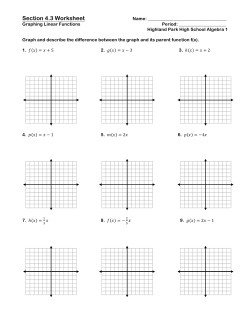
Highland Dancing and SDCCS 2017 Quick Facts
Backgrounder March 2015 Highland Dancing and SDCCS 2017 Quick Facts Over 800 Highland dancers (boys and girls) are expected to compete in the 2017 ScotDance Canada Championship Series. Dancers will travel from our Canadian provinces and territories, the United States, the United Kingdom, and farther abroad. An international panel of nine judges will adjudicate the various competitions and championships. Three bagpipers will play for music for these competitions. ScotDance PEI is the host organization, an Affiliate of ScotDance Canada. More than 200 volunteers will help make this event a success. Four traditional Highland dances are danced in every championship event: the Highland Fling, the Sword Dance, the Seann Truibhas (pronounced Shawn Trews), and the Reel. Specific championship steps are decided every year by the Scottish Official Board of Highland Dancing, so that all championship dancers are judged dancing the same steps. There are more than 15 non-championship Highland dances, called Scottish National dances, and these are danced in regular competitions. Dancers choose the steps they will perform from a syllabus. All Highland dances are rooted in Scottish tradition and history. For example, the Seann Truibhas tells the story of the English banning Scots from wearing the kilt after the rebellion of 1745. The first part of the dance represents the Scots shaking off the hated trousers, and the second part of the dance shows the joy of being able to wear the kilt again. The Scottish Official Board of Highland Dance (SOBHD) is the World Governing Body of Highland Dancing, and ScotDance Canada (SDC) is our National Governing Body of Highland Dancing. These bodies implement rules for Highland dance competitions and championships. The Scottish Dance Teachers’ Alliance (SDTA), British Association of Teachers of Dance (BATD), and the United Kingdom Alliance (UKA) examine and accredit dance teaches and judges around the world. Dancers compete in different competitive levels, moving from beginner to novice to intermediate to premier. Premier level dancers are able to compete in Highland Dancing championships. All competitors are also grouped into age categories. Premier dancers compete annually in provincial championships to earn the right to represent their provinces at the Canadian Championships. The top three premier dancers from each age group in each province compete at the Canadian championships. Canadian champions are crowned in seven age groups: 9 years & under, 11 years & under, 13 years & under, 15 years & under, 17 years & under, 20 years & under, and 21 years and over.
© Copyright 2025




















